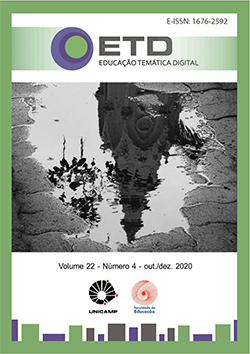Abstract
The problem of the method in higher studies in New Granada, today Colombia, has been a constant search for professors and study plans in relation to the teaching of the new science. Towards the end of the 18th century and the beginning of the 19th century, the tension between Goudin's (scholastic) method and José Félix de Restrepo's synthetic-analytical method in the teaching of physics, and in particular in the teaching of light, was still alive; each of these methods established criteria to determine the truth of things, it was the commitment to truth in making known the ways of proceeding in science. But, the limitations to Restrepo's method were immediate, one of his disciples such as Francisco José de Caldas in 1810 was familiar with the analytical method in higher studies through the text of René Just Haüy for the teaching of physics. Haüy proposes in his book the analytical method as the fruitful path for physics itself in the construction of its theories and laws through experimentation and, therefore, the way to follow in teaching; in other words, Haüy makes analysis the main means of teaching. In the end, the analytical or invention method is institutionalized in the Santander Plan of 1826 for higher studies at the beginning of the republic.
References
ACADEMIA DE CIENCIAS EXACTAS, FÍSICAS Y NATURALES. Cartas de Caldas. Disponible en: https://play.google.com/store/books/details?id=JKbVAAAAMAAJ&rdid=book-JKbVAAAAMAAJ&rdot=1. Revisado el: 16 de diciembre 2018.
ARBOLEDA, Luis Carlos; SOTO, Diana. Francisco Antonio Zea y la institucionalización de las ciencias en Colombia. In: ARBOLEDA, Luis Carlos; OSORIO, Carlos (Org.). Nacionalismo e internacionalismo en la historia de las ciencias y la tecnología en América Latina. Cali: Universidad del Valle, 1997. p. 259-276.
ARBOLEDA, Luis Carlos. Élites, Medidas y Estado en Colombia: De finales de la Colonia a la Segunda República. In: ARBOLEDA, Carlos (Org.). La nación imaginada. Ensayos sobre los proyectos de nación en Colombia y América Latina en el siglo XIX. Cali: Universidad del Valle, 2015. p. 117-230.
CALDAS, Francisco José. Cuaderno manuscrito de Caldas sobre el semanario de la Nueva Granada. Artículos sin publicar según Liborio Zerda. Manuscrito sin catalogar. Bogotá: archivo histórico de la universidad del Rosario, 1809.
CALDAS, Francisco José. (1849). Semanario de la Nueva Granada: Miscelanea de ciencias literatura, artes é industria publicada por una sociedad de patriotas granadinos. s.l.: Lasserre. Disponible en: https://play.google.com/books/reader?id=JKbVAAAAMAAJ&hl=es&pg=GBS.PP7
CHENU, Jeanne. Del buen uso de instrumentos imperfectos: ciencia y técnica en el virreinato de la Nueva Granada. In: ARIAS DE GREIFF, Jorge et al (Org.). Caldas 1768-1816: Francisco Joseph de Caldas y Thenorio. Bogotá: Molinos Velásquez, 1994. p. 55-64.
DÁVILA, Juan Manuel. Ciencias útiles y planes de estudio en la Nueva Granada: Método racional y Canon wolffiano en la Filosofía escolar neogranadina (1762-1826). Bogotá: Editorial Pontificia Universidad Javeriana, 2012.
FRANKEL, Eugene. Corpuscular Optics and the Wave Theory of Light: The Science and Politics of a Revolution in Physics. 1976. Disponible en: http://www.jstor.org/stable/284930. Revisado el: 9 abril 2013.
HAÜY, René Just. Traité élémentaire de physique. París: Chez Courcier. 1806.
HULIN, Nicole. René-Just Haüy: Des leçons de l'an III au Traité élémentaire de physique. Revue d'histoire des sciences. 1997. Disponible en: http://www.persee.fr/doc/rhs_0151-4105_1997_num_50_3_1283. Revisado el: 4 noviembre 2018.
NIETO-GALAN, Agustín. Los públicos de la ciencia. Expertos y profanos a través de la historia. Madrid: Fundación Jorge Juan, Marcial Pons. 2011.
QUINTERO, Jorge Eliécer. Educación, Ciencia y Política: La pretensión de la modernidad en los siglos XVIII y XIX. In: BARONA BECERRA, Guido; GNECCO VALENCIA, Cristobal (Org.). Territorios posibles: Historia, geografía y cultura del Cauca, Tomo II. Popayán: Universidad del Cauca, 2001. p. 297-324.
SALDARRIAGA, Oscar. El canon de las ciencias universitarias en la Nueva Granada, 1774-1896. Revista Memoria y Sociedad, Bogotá, v. 15, n. 31, p. 86-102, julio. 2001.
SANTANDER, Francisco de Paula. (03 de octubre de 1924). Decreto 1 de 1826. Codificación Nacional, VII, p. 401-451.
SANTANDER, Francisco de Paula. Reforma al Plan de Estudios. Bogotá, 26 de octubre de 1820. In: Obra educativa de Santander (1819-1826). Bogotá: Fundación Francisco de Paula Santander, 1990.
SILVA, Renán. Saber, cultura y sociedad en el Nuevo Reino de Granada, siglos XVII y XVIII. Bogotá: Universidad Pedagógica Nacional. 1984.
SOTO, Diana. La enseñanza ilustrada en las universidades de América colonial. Estudio historiográfico. In: SOTO ARANGO, Diana; PUIG SAMPER, Miguel Ángel; ARBOLERA, Luis Carlos (Org.). La Ilustración en América Colonial. Madrid: Consejo Superior de Investigaciones Científicas, COLCIENCIAS. 1995 p. 91-104.

This work is licensed under a Creative Commons Attribution-NonCommercial-NoDerivatives 4.0 International License.
Copyright (c) 2020 ETD - Educação Temática Digital


